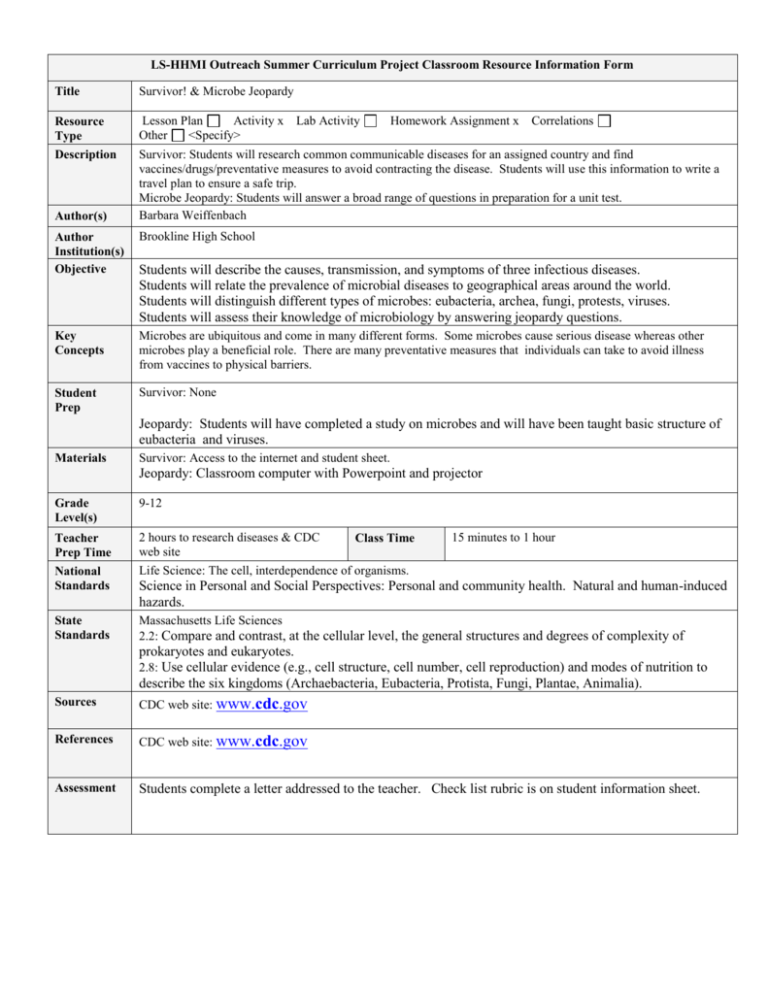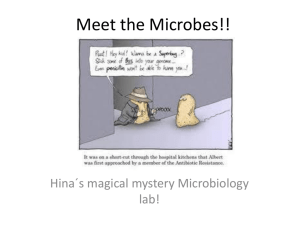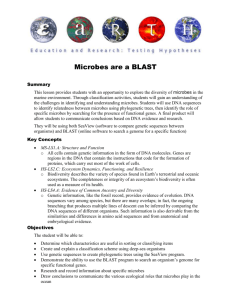Lesson Description - Life Sciences Outreach Program
advertisement

LS-HHMI Outreach Summer Curriculum Project Classroom Resource Information Form Title Survivor! & Microbe Jeopardy Resource Type Lesson Plan Activity x Other <Specify> Description Survivor: Students will research common communicable diseases for an assigned country and find vaccines/drugs/preventative measures to avoid contracting the disease. Students will use this information to write a travel plan to ensure a safe trip. Microbe Jeopardy: Students will answer a broad range of questions in preparation for a unit test. Barbara Weiffenbach Author(s) Lab Activity Homework Assignment x Correlations Author Institution(s) Objective Brookline High School Key Concepts Microbes are ubiquitous and come in many different forms. Some microbes cause serious disease whereas other microbes play a beneficial role. There are many preventative measures that individuals can take to avoid illness from vaccines to physical barriers. Student Prep Survivor: None Students will describe the causes, transmission, and symptoms of three infectious diseases. Students will relate the prevalence of microbial diseases to geographical areas around the world. Students will distinguish different types of microbes: eubacteria, archea, fungi, protests, viruses. Students will assess their knowledge of microbiology by answering jeopardy questions. Jeopardy: Students will have completed a study on microbes and will have been taught basic structure of eubacteria and viruses. Materials Survivor: Access to the internet and student sheet. Jeopardy: Classroom computer with Powerpoint and projector Grade Level(s) 9-12 Teacher Prep Time 2 hours to research diseases & CDC web site National Standards Life Science: The cell, interdependence of organisms. State Standards Massachusetts Life Sciences 2.2: Compare and contrast, at the cellular level, the general structures and degrees of complexity of Class Time 15 minutes to 1 hour Science in Personal and Social Perspectives: Personal and community health. Natural and human-induced hazards. prokaryotes and eukaryotes. 2.8: Use cellular evidence (e.g., cell structure, cell number, cell reproduction) and modes of nutrition to describe the six kingdoms (Archaebacteria, Eubacteria, Protista, Fungi, Plantae, Animalia). Sources CDC web site: www.cdc.gov References CDC web site: www.cdc.gov Assessment Students complete a letter addressed to the teacher. Check list rubric is on student information sheet.










